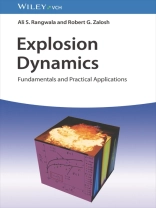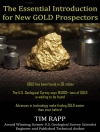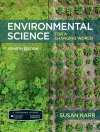Explosion Dynamics
Structured and comprehensive introductory guide to understanding and applying explosion dynamics concepts
Explosion Dynamics thoroughly explores the physical phenomena of explosions and enables readers to understand controlling variables that govern temperature, pressure, and rate of increase in pressure respectively, while also providing a mathematical framework for characterizing and applying key concepts.
To promote seamless reader comprehension, this comprehensive textbook provides working examples, case studies, and assignments for self-study, as well as additional material such as property data for common gases and dusts, which supports the examples presented throughout the text.
Written by two highly qualified authors, topics covered in Explosion Dynamics include:
- Similitude theory, similarity solutions, nonlinear systems of differential equations, gas dynamics, and chemical kinetics
- How a flammable mixture of gas or vapor or a suspension of powder, dust particles, or droplets forms in the industrial processing of hazardous materials
- Range of temperature, pressure, and concentration in which a flame can ignite and propagate
- How the “rate-of-pressure-rise” affects the overall explosion hazard and the viability of various explosion protection measures
Providing a structured and comprehensive approach to the subject, Explosion Dynamics is an indispensable textbook that allows chemistry and engineering students, along with professional engineers and professionals in the chemical and food industries, to understand the fundamental mathematics and physics involved in explosions and develop appropriate protection and prevention measures.
Inhoudsopgave
Preface xi
1 Introduction 1
1.1 What Is an Explosion? Types of Explosions Covered in this Book 1
1.1.1 Nuclear Explosions 2
1.1.2 Pressure Vessel Bursts 3
1.1.3 Explosives 3
1.1.4 Closed Vessel Detonation 4
1.1.5 Steam Explosions 6
1.1.6 Closed Vessel Deflagrations 6
1.1.7 Building Deflagrations 8
1.1.8 Vapor Cloud Explosions 9
1.2 Controlling Parameters of a Combustible Gas/Vapor Explosion Hazard 10
1.3 Flame Propagation 12
1.4 Mixture Concentration – Definition of Flammability Limits 23
1.5 Minimum Ignition Energy (MIE) and Auto Ignition Temperature (AIT) 25
Exercise Problems 27
Nomenclature 27
Greek Symbols 28
Subscripts 28
Other Notations 29
References 29
2 Synopses of Explosion Incidents 31
2.1 Hydrogen Cylinder Trailer Module Explosion 31
2.2 Nylon Flock Dust Explosion 33
2.3 Flammable Vapor Explosion at Ink and Paint Manufacturing Plant 36
2.4 Jahn Foundry Dust Explosion 40
2.5 Upper Big Branch Coal Mine Explosion 45
Nomenclature 51
Subscripts 51
Other Notations 51
References 52
3 Explosion in a Closed Vessel 55
3.1 Introduction 55
3.2 The Movement of a Flame in a Premixed Gas–Air Mixture 57
3.3 Explosion Pressure Rise vs. Time in a Confined Vessel (Theory) 59
3.4 The Closed Vessel as an Experimental Platform for Standard Testing 68
3.5 Influence of Flame Wrinkling, Turbulence, and Dust on Flame Propagation 72
Nomenclature 75
Greek Symbols 75
Subscripts 75
Other Notations 76
References 76
4 Explosion in a Vented Vessel 79
4.1 Introduction: How Does Pressure Develop in a Vented Vessel? 79
4.2 Explosion in a Vented Vessel Neglecting Transient Effects 81
4.3 Pressure Generation in a Vented Vessel with Transient Effects 83
4.4 Flame Instabilities 85
4.5 Flame Front Turbulence and the Concept of Turbulent Burning Velocity ST 86
4.5.1 What Happens with Dust? 88
4.6 Pressures Generated in Vented Vessels – Experiments 89
4.6.1 Influence of Ignition Location 89
4.6.2 Effect of Obstacles 91
4.6.3 Influence of Vent Size and Turbulence with Obstacles 92
4.6.4 Influence of Turbulence with Vented Dust Explosions 94
4.7 Modeling Pressure Generated as a Function of Time in a Vented Vessel 97
4.7.1 Conservation of Mass 98
4.7.2 Expression for mu in Terms of P 99
4.7.3 Expression for mb in Terms of P 99
4.7.4 Expression for mv in Terms of P 100
4.7.5 Conservation of Energy: Expression for Vb in Terms of P 102
4.7.6 Final Equations for the Model 104
4.7.6.1 Calculation of Total Enthalpy of the Gas–Air Mixture 105
4.7.6.2 Burning Velocity 106
4.8 Pressure Developed Outside the Enclosure 113
4.9 Vent Design in Engineering Codes and Standards 115
Nomenclature 121
Greek Symbols 122
Subscripts 122
Superscript 122
Other Notations 122
References 122
5 Accumulation of a Flammable Mixture in an Enclosure 127
5.1 Introduction 127
5.2 Gas Filling in an Enclosure with Forced Ventilation 128
5.3 Gas Filling in an Enclosure with Passive Ventilation 130
5.4 Criteria for Mixture Uniformity 134
5.5 Concentration Buildup in an Enclosure by a Liquid Spill 137
5.5.1 Size of Spill 137
5.5.2 Evaporation of a Flammable Liquid Spill 137
5.6 Concentration Buildup in an Enclosure due to Dust 142
Nomenclature 145
Greek Symbols 146
Subscripts 146
Other Notations 147
References 147
6 Dimensionless Analysis 149
6.1 Introduction 149
6.2 Dimensional and Nondimensional Quantities 149
6.3 The Buckingham Pi Theorem 150
6.4 Procedure for Obtaining Pi Terms 150
6.4.1 Creating a Correlation 154
Nomenclature 161
Greek Symbols 161
Subscripts 161
References 162
7 Vapor Cloud Explosions 163
7.1 Introduction 163
7.2 Shape of Overpressure Curves: Pressure Wave, Shock Wave, and Blast Wave 164
7.3 The Classical Model of Pressure Developed by a Spherically Expanding Flame 166
7.4 TNT Equivalent Model 168
7.5 The Multienergy Models 172
7.6 Baker–Strehlow–Tang Model 172
7.7 TNO Model 175
7.8 The Williams Model 186
7.9 Computational Fluid Dynamics (CFD) Modeling of VCE 189
7.10 Summary 190
Nomenclature 190
Greek Symbols 191
Subscripts 191
Other Notations 191
References 192
8 Dust Flames and Dust Explosions 195
8.1 Introduction 195
8.2 Elements of a Dust Explosion 196
8.3 Flame Structure – What Is a Dust Flame? 200
8.4 Dust Explosion Test Platforms 208
8.4.1 Hybrid Flame Analyzer 208
8.4.2 The Standard 1 m3 and 20-l Explosion Spheres 213
8.4.3 Minimum Ignition Energy (MIE) Tests 216
8.4.4 Dust Ignition Temperature Tests 218
8.4.5 Limiting Oxygen Concentration 222
8.4.6 Open Dust Deflagration Test Apparatus by Dobashi 223
8.5 Powder and Dust Processing Equipment 223
8.5.1 Particle Size Reduction Equipment 224
8.5.2 Ovens and Dryers 226
8.5.3 Dust Collectors 228
8.5.4 Other Powder and Dust Handling Equipment 231
8.6 Dust Hazard Analyses 231
8.7 Dust Explosion Venting 238
Exercise Problems 242
Nomenclature 242
Greek Symbols 243
Subscripts 243
Other Notations 243
References 244
9 Other Explosion Protection Methods 249
9.1 Introduction 249
9.2 Gas/Vapor Concentration Dilution 249
9.3 Inerting 251
9.4 Explosion Suppression Systems 253
9.5 Isolation 259
Nomenclature 267
Greek Symbols 268
Subscripts 268
Other Notations 268
References 269
Appendix A A Review of Chemistry and Thermodynamics 271
A.1 Mole Fraction (Xi) and a Mass Fraction (Yi) 271
A.1.1 Mole 271
A.1.2 Molar volume of a gas 271
A.1.3 Gram-mole 271
A.2 Stoichiometry 273
A.3 Combustion Chemistry 275
A.3.1 Combustion of Propane 276
A.3.2 Combustion of Butane 277
A.3.3 Represent as a Mixture 277
A.3.4 Determine Volume Percent of Fuel 278
A.3.5 Determine Weight Percent of Fuel 278
A.4 Pressure 279
A.5 Energy Terms and Adiabatic Flame Temperature 280
A.5.1 Ethane in Air 282
A.6 Equivalence Ratio 284
A.6.1 Stoichiometric Coefficient (s or r Depending on Reference) 285
A.7 Heat and Heat Capacity 285
A.8 Entropy and Isentropic Process 285
A.8.1 Definitions 286
A.8.2 Ideal Gas Temperature – Entropy Relationships 286
A.8.3 Isentropic Relations 288
Exercises 289
References 289
Appendix B Mathematica Code for Solved Examples 291
Index 299
Over de auteur
Ali S. Rangwala is a Professor in the Department of Fire Protection Engineering at Worcester Polytechnic Institute (WPI) (2006 – present). He received his Ph D in Mechanical and Aerospace Engineering from the University of California, San Diego (2006).
Robert G. Zalosh has been a WPI Professor Emeritus of Fire Protection Engineering (FPE) since retiring from his position as FPE Professor in 2006. Before joining the WPI faculty, Dr. Zalosh worked for 15 years at Factory Mutual Research Corporation (FMRC), where he held several positions, including the Manager of the Applied Research Department.












